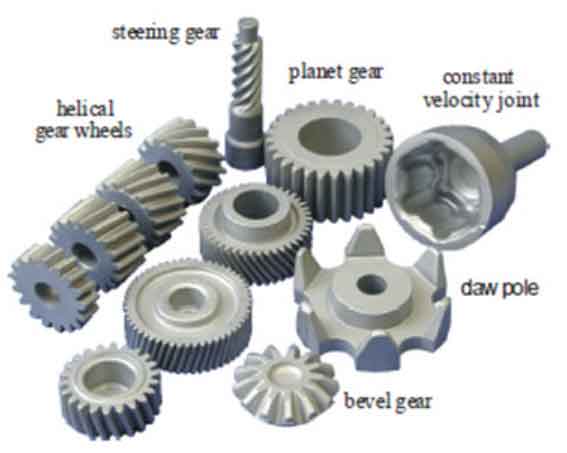Precision forging plays a vital role in achieving consistency and reproducibility in component production across various industries. By utilizing advanced techniques and tightly controlled processes, precision forging ensures that components are manufactured to the exact specifications consistently, leading to high-quality, reliable, and interchangeable parts.

Here are the key factors that contribute to the consistency and reproducibility of precision forging:
- Process Control: Precision forging involves precise control of parameters such as temperature, pressure, and deformation during the forging process. Advanced computer-controlled systems and sensors monitor and adjust these parameters in real-time, ensuring that each component is produced with consistent quality.
- Die Design and Tooling: The design and fabrication of precision forging dies and tooling are crucial for achieving consistent component production. Highly skilled engineers use computer-aided design (CAD) and computer-aided manufacturing (CAM) techniques to develop dies that meet the required specifications. The use of high-quality materials and precise machining techniques contributes to the repeatability of the process.
- Material Properties: Precision forging relies on the use of materials with well-defined properties. The material composition, mechanical properties, and microstructure are carefully selected and controlled to ensure consistency in the forging process. This ensures that the material behaves predictably during forging, resulting in consistent final product characteristics.
- Process Monitoring and Inspection: Precision forging employs advanced monitoring and inspection techniques to verify the quality and integrity of each component. Non-destructive testing methods such as ultrasonic inspection, visual inspection, and dimensional measurement systems are used to detect any defects or deviations from the desired specifications. Real-time feedback from these inspections helps maintain consistent quality and allows for adjustments if necessary.
- Tooling Maintenance and Replacement: Regular maintenance and replacement of precision forging tooling are crucial for maintaining consistency and reproducibility. Worn or damaged dies and tooling can lead to variations in component dimensions and quality. By adhering to a strict maintenance schedule and replacing worn components, manufacturers can ensure that the tooling remains in optimal condition, contributing to consistent part production.
- Standardization and Documentation: Precision forging processes are often standardized and documented to establish clear guidelines for each manufacturing step. Standard operating procedures (SOPs) outline the necessary process parameters, inspection criteria, and quality control measures. This ensures that every operator follows the same procedures, reducing variations and promoting consistent results.
The benefits of achieving consistency and reproducibility in precision forging are significant:
- Interchangeability: Consistent production ensures that components can be interchanged without issues. This is particularly important in industries such as automotive and aerospace, where components must fit precisely and work together seamlessly.
- Quality Assurance: Consistent quality in precision forging results in components with reliable performance and durability. It reduces the risk of defects, failures, and rejections, leading to increased customer satisfaction and trust.
- Cost Efficiency: Consistency and reproducibility minimize the need for rework, scrap, and additional inspections, reducing overall manufacturing costs. It also enables better inventory management and planning.
- Time Savings: With consistent processes and results, manufacturers can streamline production and reduce lead times. This allows for faster delivery of components to customers, improving overall efficiency.
- Continuous Improvement: Achieving consistency and reproducibility provides a foundation for continuous improvement efforts. By analyzing data and feedback from the manufacturing process, manufacturers can identify areas for optimization and make targeted enhancements to further improve quality and efficiency.
Precision forging’s ability to achieve consistency and reproducibility in component production is essential for industries that require high-quality, interchangeable parts. By tightly controlling the process parameters, maintaining tooling, and adhering to standardization, manufacturers can ensure that each component meets the required specifications, resulting in reliable, high-performance products.
